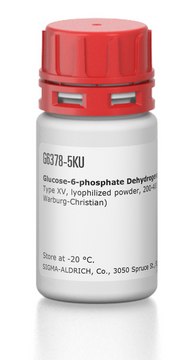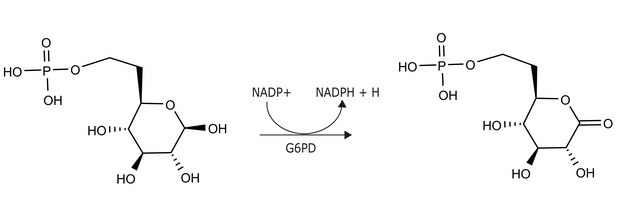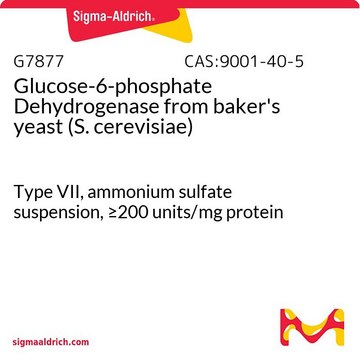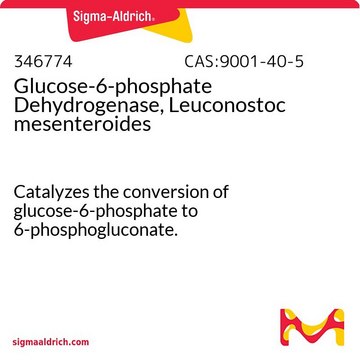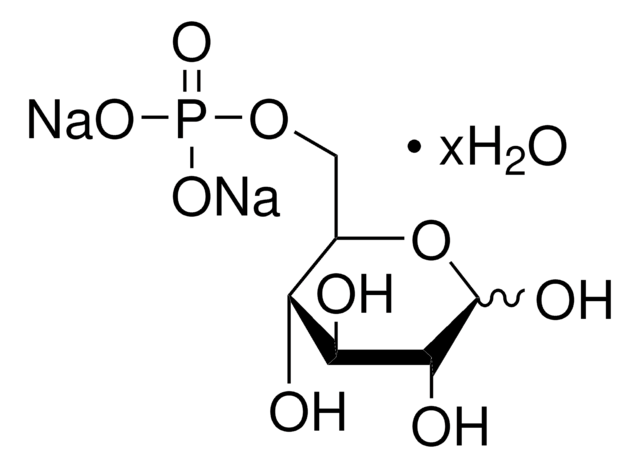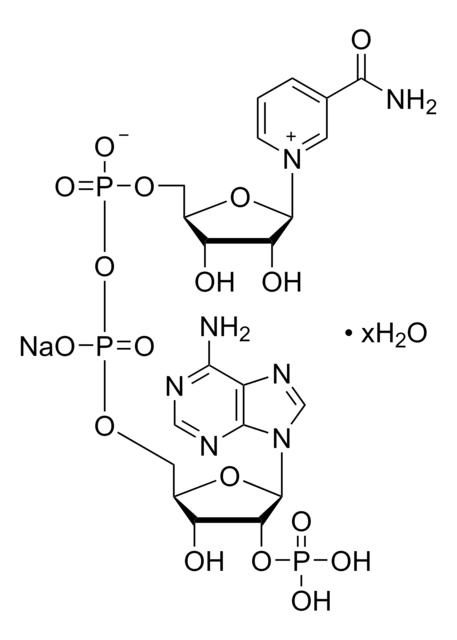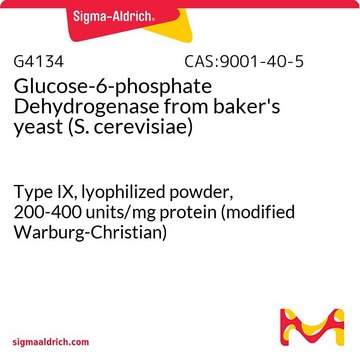P4553
6-Phosphogluconic Dehydrogenase from yeast
lyophilized powder, ≥3.0 units/mg solid
Synonym(s):
6-Phospho-D-gluconate:NADP+ 2-oxidoreductase (decarboxylating), 6-Phosphogluconic Dehydrogenase from yeast
Sign Into View Organizational & Contract Pricing
All Photos(1)
About This Item
CAS Number:
MDL number:
UNSPSC Code:
12352204
NACRES:
NA.54
Recommended Products
biological source
yeast
Quality Level
form
lyophilized powder
specific activity
≥3.0 units/mg solid
mol wt
52 kDa
storage temp.
2-8°C
Looking for similar products? Visit Product Comparison Guide
General description
6-Phosphogluconic Dehydrogenase from yeast comprises of a NADP+ binding domain, α helical hydrophobic interaction domain and a C-terminal domain. It exists as dimer and the C-terminal region is crucial for the substrate binding and release.
Application
6-Phosphogluconic Dehydrogenase from yeast has been used in hexokinase (HK) and xylose reductase (XR) activities in cell lysate.
Biochem/physiol Actions
Enzyme activity is determined by measuring the reduction of NAD+ or NADP+. High levels of NADPH are believed to inhibit the enzyme, while 6-phosphogluconate acts to activate the enzyme.
Unit Definition
One unit will oxidize 1.0 μmole of 6-phospho-D-gluconate to D-ribulose 5-phosphate and CO2 per min at pH 7.4 at 37 °C in the presence of NADP+.
inhibitor
Product No.
Description
Pricing
Signal Word
Danger
Hazard Statements
Precautionary Statements
Hazard Classifications
Resp. Sens. 1
Storage Class Code
11 - Combustible Solids
WGK
WGK 1
Flash Point(F)
Not applicable
Flash Point(C)
Not applicable
Personal Protective Equipment
dust mask type N95 (US), Eyeshields, Gloves
Regulatory Information
常规特殊物品
Choose from one of the most recent versions:
Certificates of Analysis (COA)
Lot/Batch Number
Don't see the Right Version?
If you require a particular version, you can look up a specific certificate by the Lot or Batch number.
Already Own This Product?
Find documentation for the products that you have recently purchased in the Document Library.
Enhancement of xylose uptake in 2-deoxyglucose tolerant mutant of Saccharomyces cerevisiae
Kahar P, et al.
Journal of Bioscience and Bioengineering, 111(5), 557-563 (2011)
Gluconate Kinase Is Required for Gluconate Assimilation and Sporulation in Cryptococcus neoformans.
Jezewski, et al.
Microbiology spectrum, 10, e0030122-e0030122 (2022)
Ai-Hua Jin et al.
BMC structural biology, 7, 28-28 (2007-04-21)
Alpha-conotoxins have exciting therapeutic potential based on their high selectivity and affinity for nicotinic acetylcholine receptors. The spacing between the cysteine residues in alpha-conotoxins is variable, leading to the classification of sub-families. BuIA is the only alpha-conotoxin containing a 4/4
G Martínez-Drets et al.
Journal of bacteriology, 130(3), 1139-1143 (1977-06-01)
6-Phospho-D-gluconate:NAD+ 2-oxidoreductase (decarboxylating) (NAD+-6PGD) was detected in several slow-growing strains of rhizobia, and no activity involving NADP+ was found in the same extracts. By contrast, fast-growing strains of rhizobia had NADP+-6PGD activity; most of them also had NAD+-6PGD activity. NAD+-6PGD
Crystal structure of Saccharomyces cerevisiae 6-phosphogluconate dehydrogenase Gnd1
He W, et al.
BMC Structural Biology, 7(1), 38-38 (2007)
Our team of scientists has experience in all areas of research including Life Science, Material Science, Chemical Synthesis, Chromatography, Analytical and many others.
Contact Technical Service